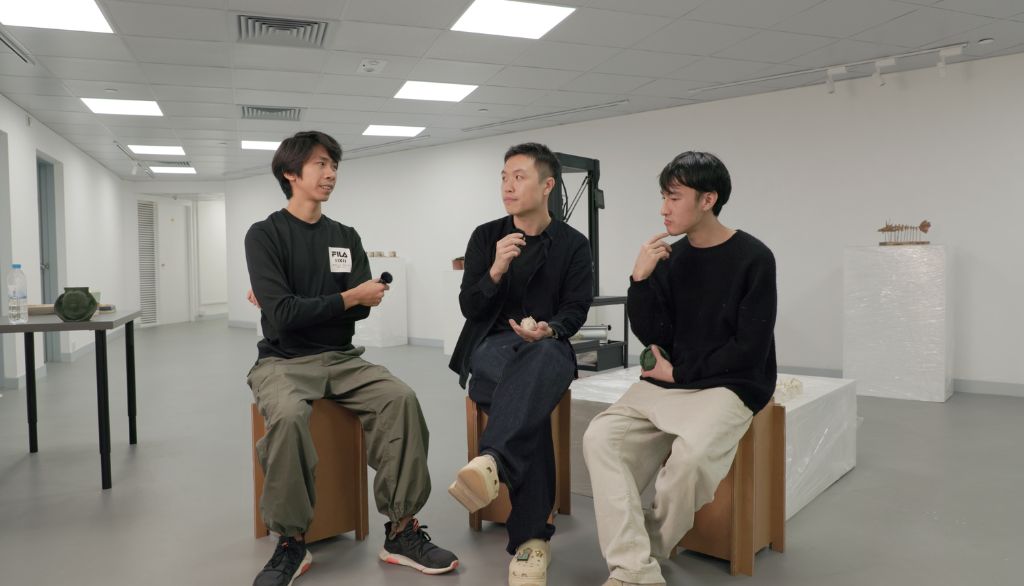
Published: 5/3/2024
Do you know the difference between the 3D printed ceramics and the traditional ceramics? Three participating artists Mok Hoi Ching Silvester, Yung Chun Kit Ivan and Yiu Chun Wa would like to share with you the differences based on their art-making experience.
The exhibiting artist Silvester Mok had a strong interest in ceramics before he came into contact with 3D printing. He admitted that he thoroughly enjoyed the process of “hand-building ceramics” because it allowed him to turn any form he imagined into a physical object with his own hands. He also appreciated the interactive nature of the process, where he could observe the changes in the clay and make modifications in real time.
Later, he combined ceramics with 3D printing technology. Although both involve ceramics production, the processes are different. For 3D printing, Silvester described the entire production process as more “indirect”, requiring more time for planning behind the scenes. Whether it’s preparing the clay, drawing designs, or post-printing modifications, all of it relies on the machine. The involvement of the printing machine introduced unknown factors and opened up many new possibilities. “For example, you can scan a friend’s head directly and print it as a finished product, which is difficult to achieve with traditional ceramics.”
“In this exhibition, my role was to assist the students in completing their works, and the greatest achievement for me was the opportunity to explore the possibilities of this machine, which I had never considered before.” When Silvester first started using the machine for ceramic production, he encountered various issues. However, now he and his students have successfully overcome these limitations, making the functionality of 3D printing more comprehensive and showcasing its versatility. Currently, Silvester continues experimenting with the potential of 3D printing ceramics, hoping to create ceramic artworks with intricate patterns and dynamic movements in the future.
As for another participating artist, Ivan, he also gained new insights through this exhibition. When comparing traditional and 3D printed prototypes, he found that the latter had higher water repellency and breathability. Traditional techniques took about half a month to achieve “water repellency” in the past, but now it only takes a week with 3D printing, making the production process faster and more flexible.
Another participating artist, Yiu Chun Wa, expressed that it was his first attempt at 3D printing. Unlike his previous experience in making ceramics, he spent most of his production time on computer work this time. “Through computer drawing and calculations, the lines of the artwork were extremely perfect. It felt like discovering a new continent. But in reality, the final product would have deviations. It turns out that unexpected situations can arise from computer drawing.” He also mentioned another advantage of 3D printing, “This project is somewhat “self-indulgent”. In the past, I would collect animal bones to make models, but it is difficult to find high-quality bones, or they might be incomplete or flawed. With 3D printing, I can make up for the shortcomings and bring the finished product closer to my imagination.”
